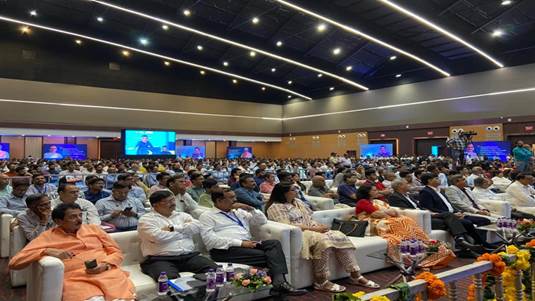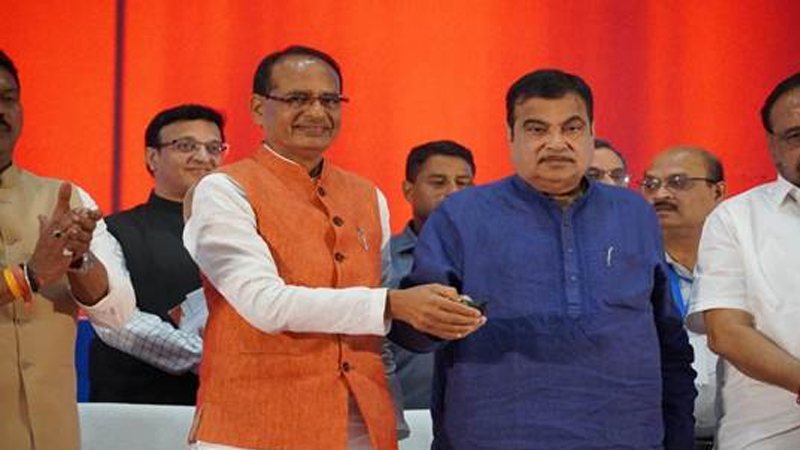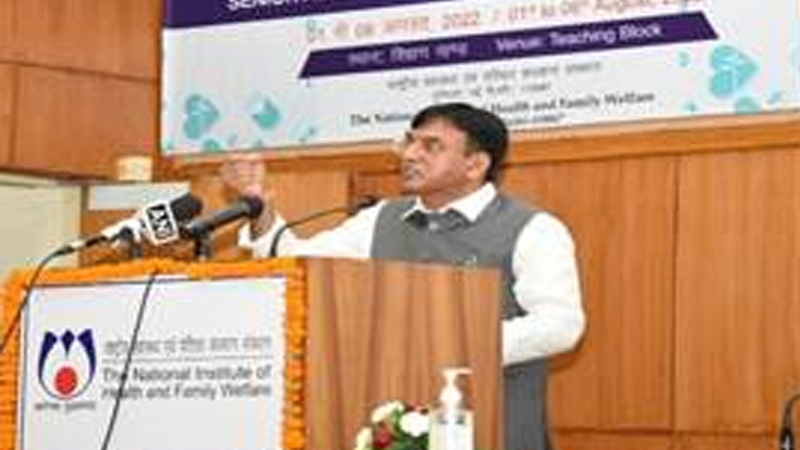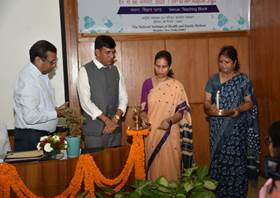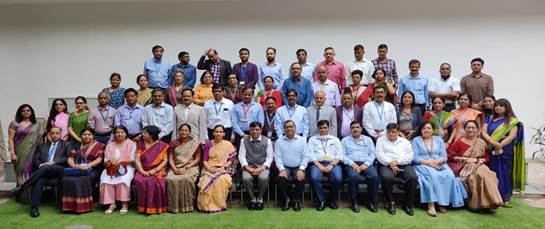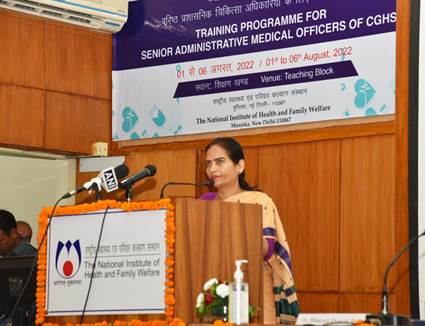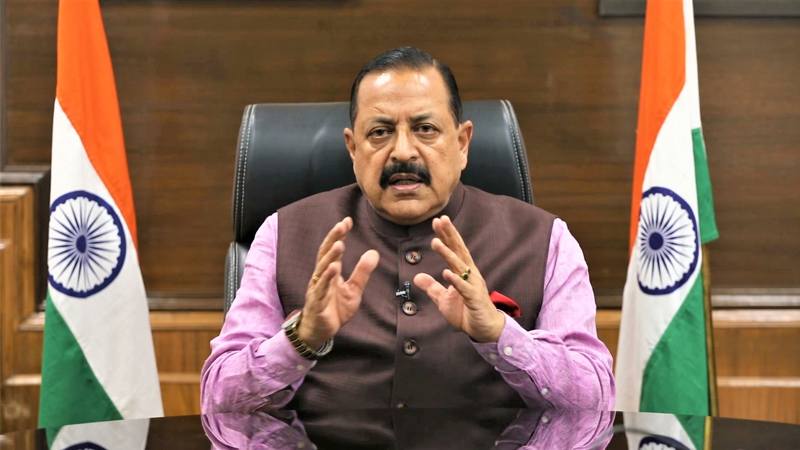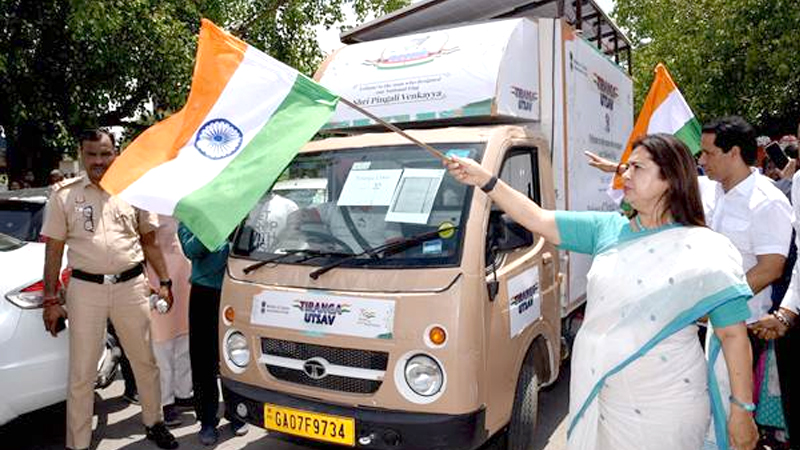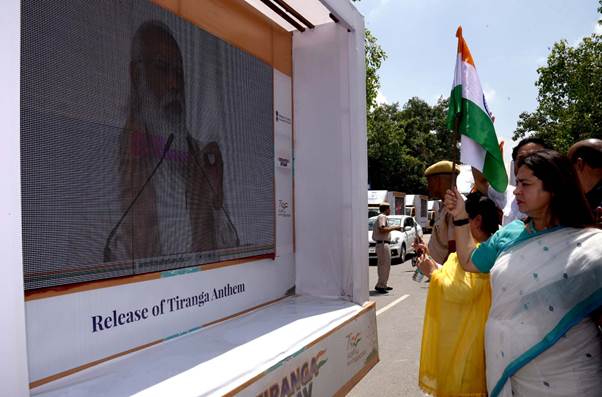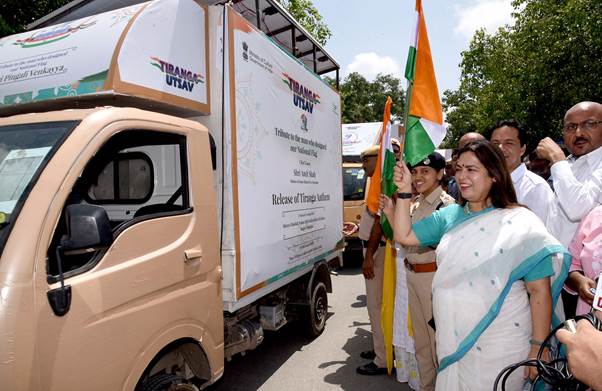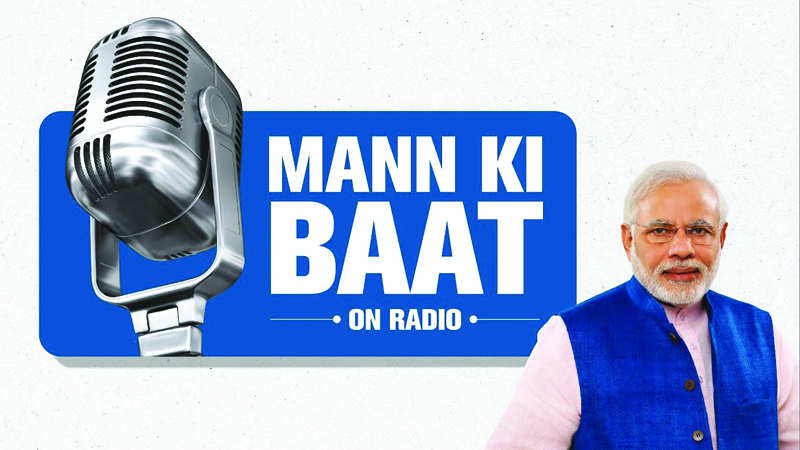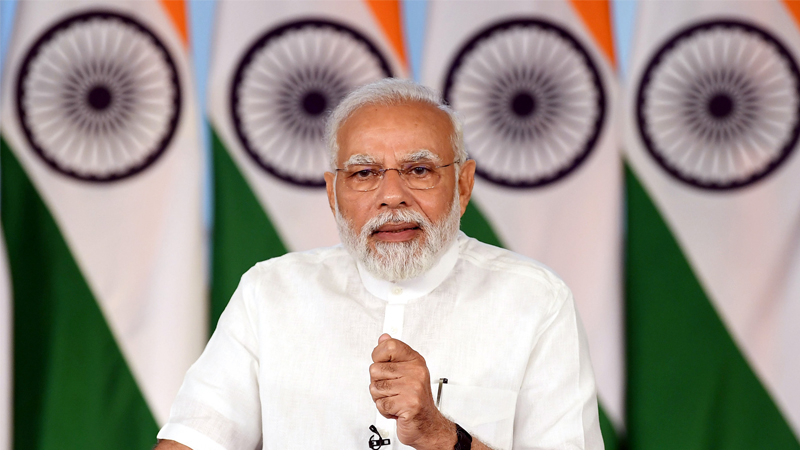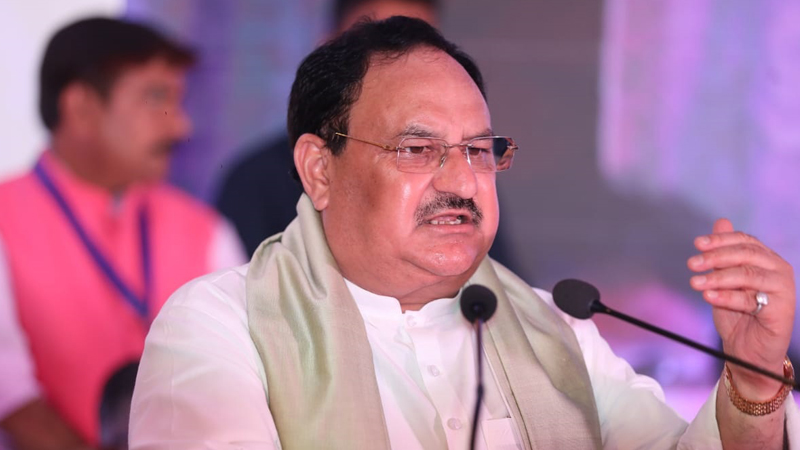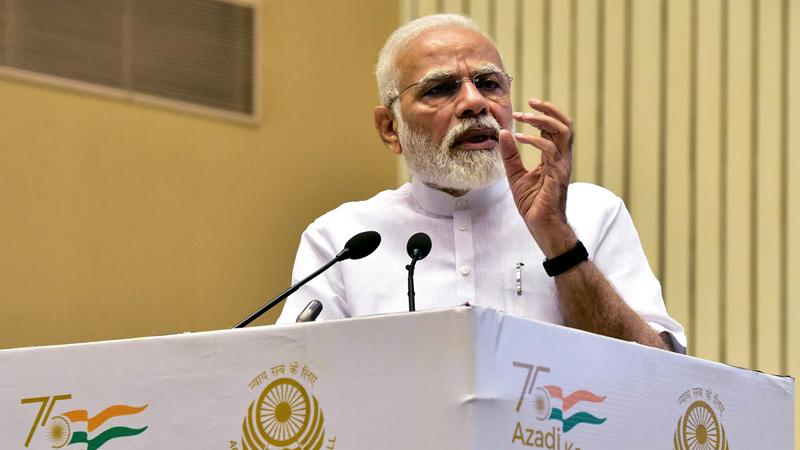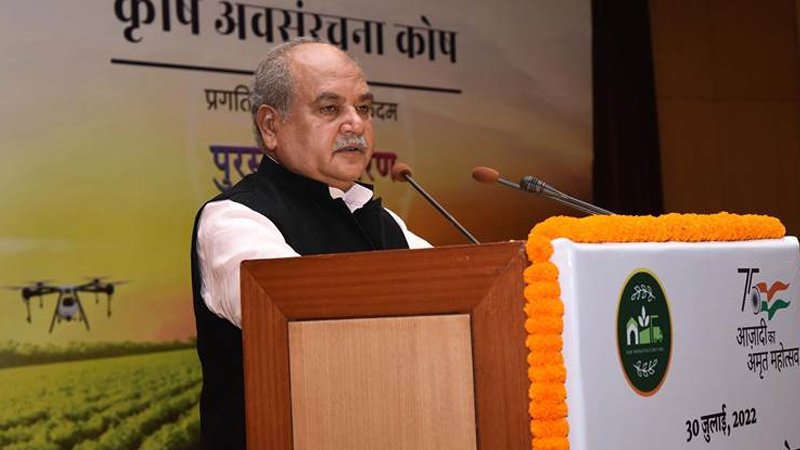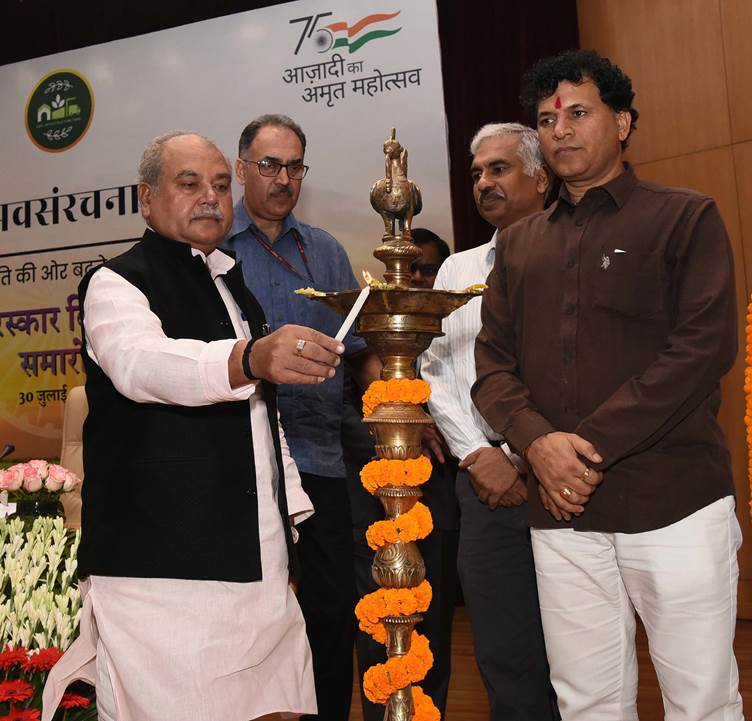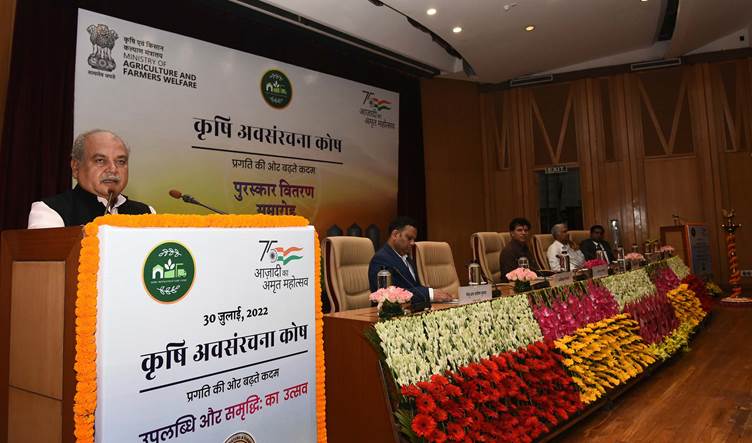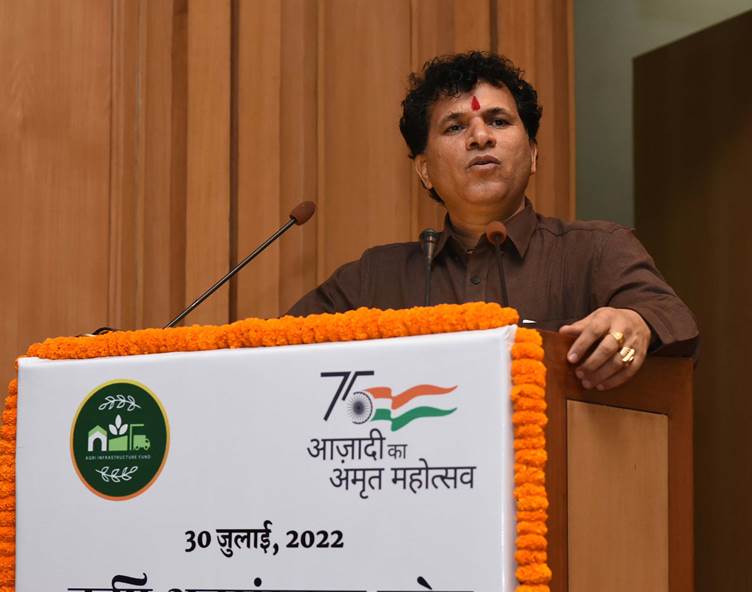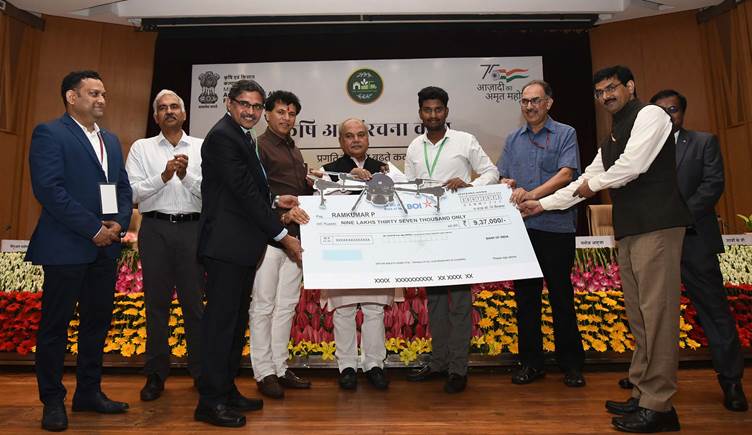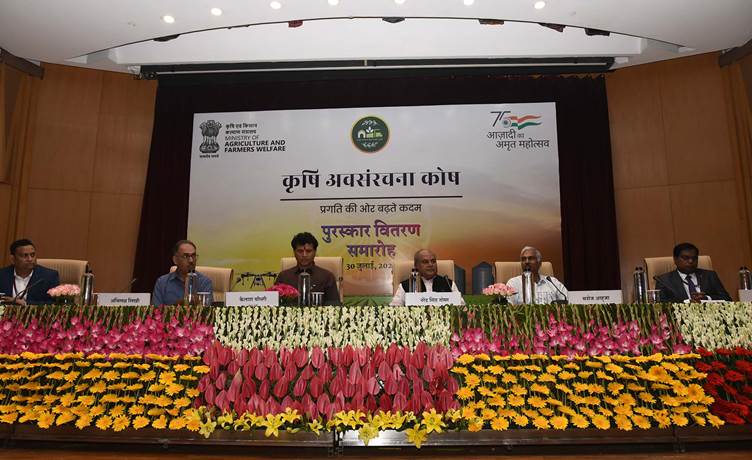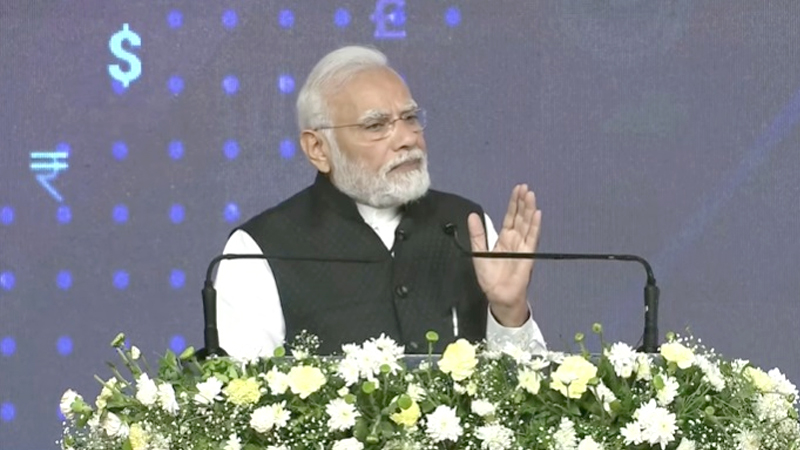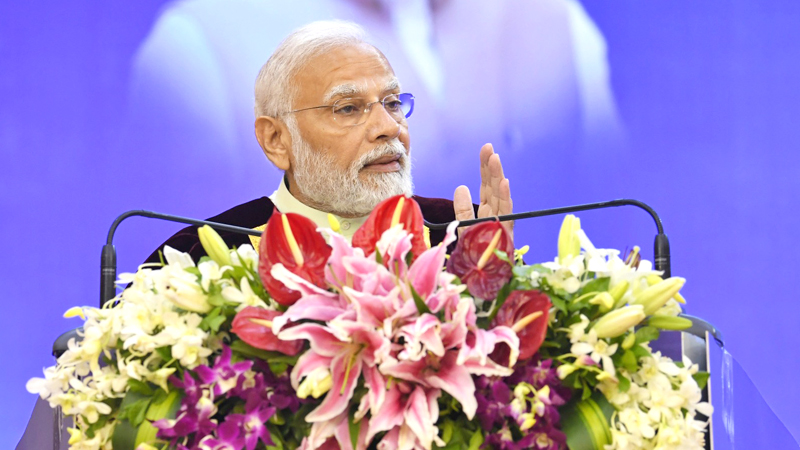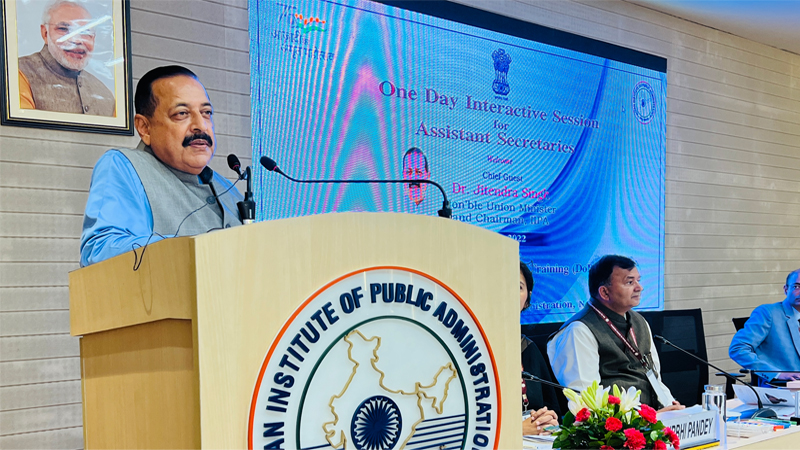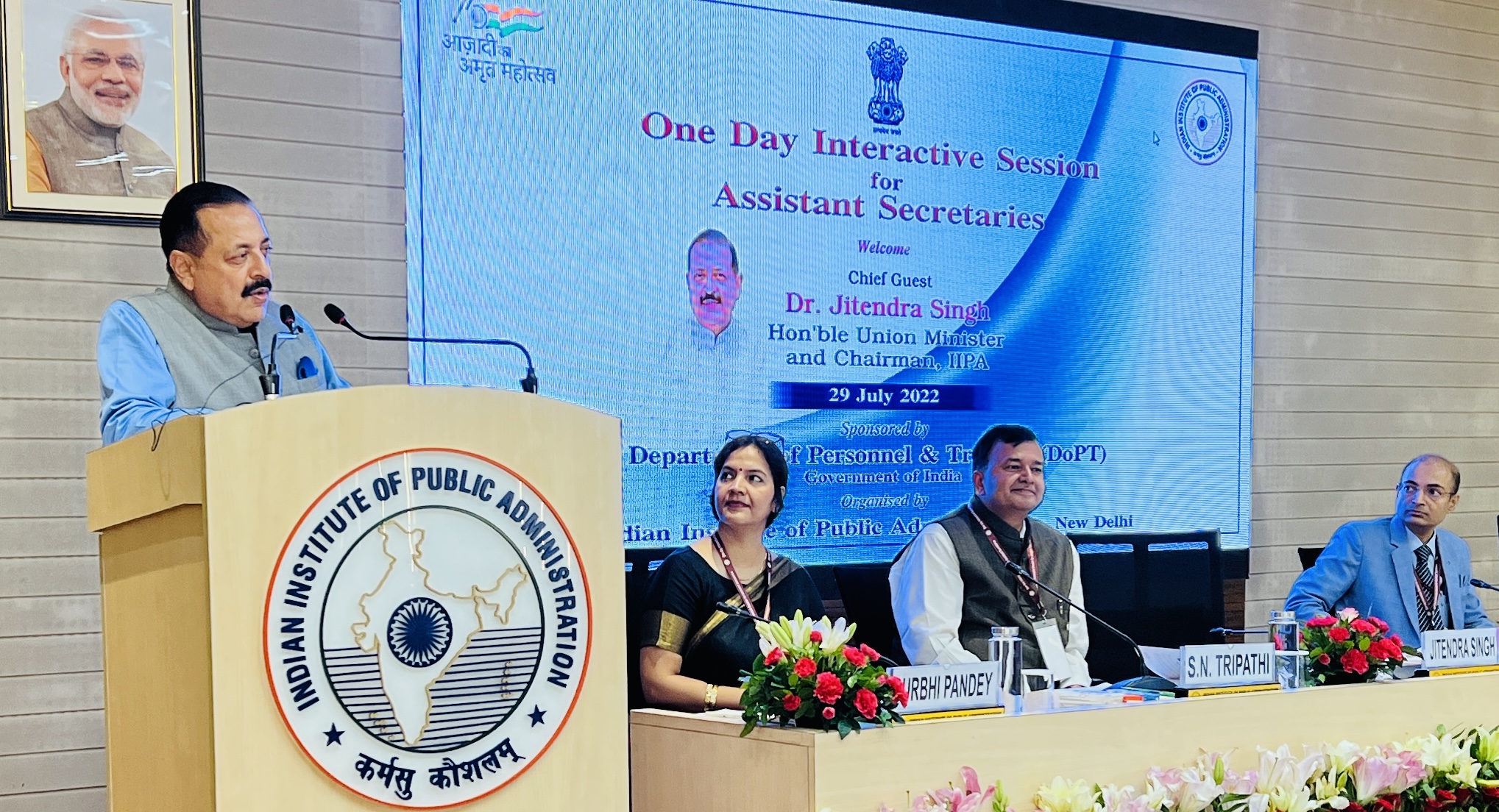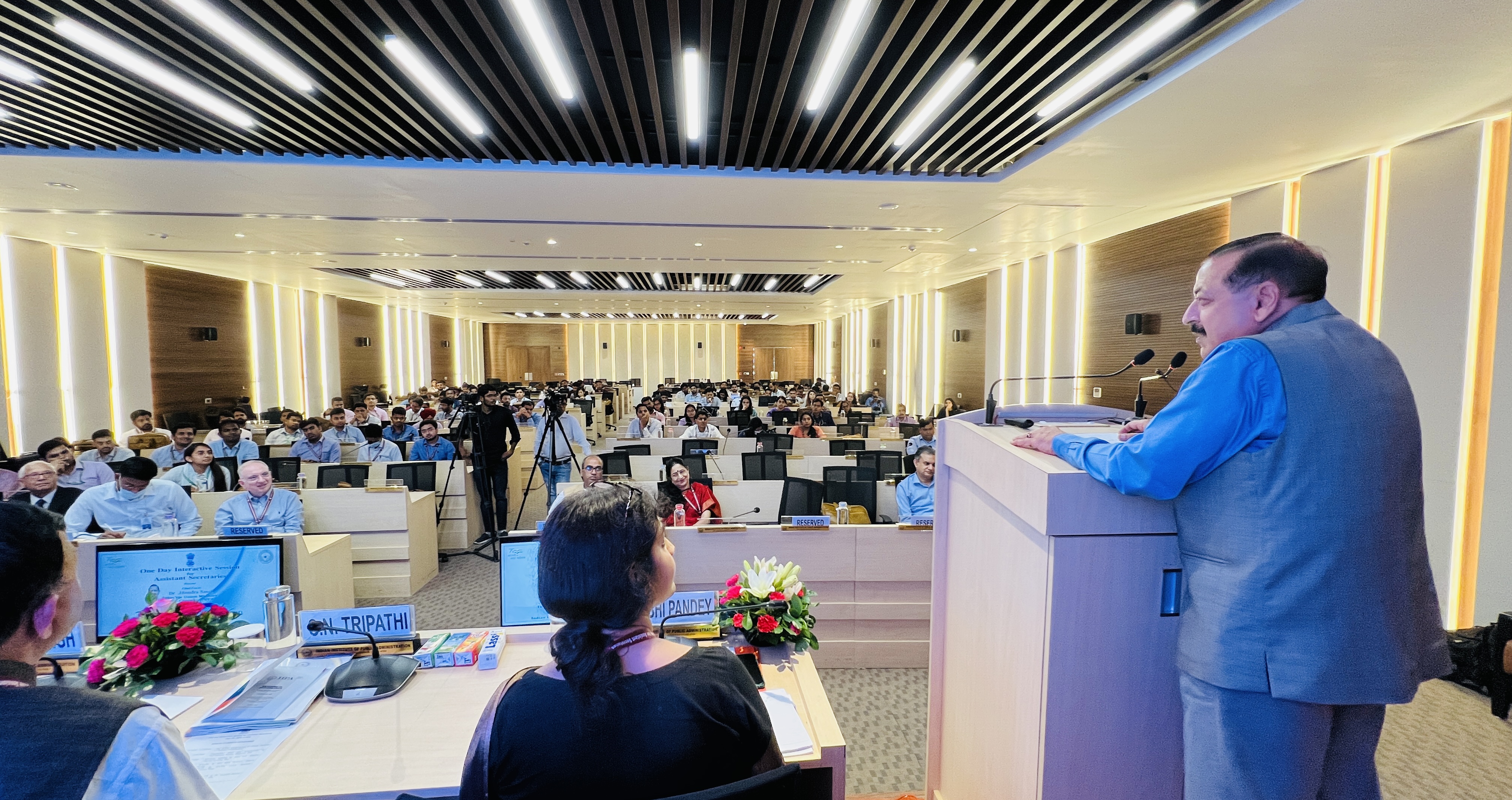My dear countrymen, Namaskar!
This is the 91st episode of ‘Mann Ki Baat’. Earlier we have talked about so many things, shared our views on myriad topics, but, this time ‘Mann Ki Baat’ is very special. The reason for this is Independence Day this time, when India will complete 75 years of her independence. We are all going to be witness to a splendid and historic moment. The Almighty has blessed us with this great fortune. Think about it… had we been born in the era of slavery, then how would have we imagined this day? That yearning of freedom from slavery, the desperation for freedom from the shackles of subjugation – how formidable it must have been! Those days, when, every single day, we would be seeing millions of countrymen fighting, battling, making sacrifices for the sake of freedom. Then we would wake up every morning with this dream of when my India would be free…. and maybe that day would dawn in our lives when we would dedicate our lives to the generations to come, chanting Vande Mataram and Bharat Maa Ki Jai, spending our youth for the cause.
Friends, on the 31st of July i.e. today, all of us countrymen salute the martyrdom of Shaheed Udham Singh ji. I offer my humble tributes to all such other great revolutionaries who sacrificed their all for the country.
Friends, I am very happy to see that the Azadi Ka Amrit Mahotsav is taking the form of a mass movement. People from all walks of life and from every section of the society are participating in different programs connected with it. One such event took place in Meghalaya earlier this month. People remembered the brave warrior of Meghalaya U. Tirot Singh on his death anniversary. Tirot Singh ji fiercely opposed the British conspiracy to control the Khasi Hills and destroy the culture there. Many artists gave beautiful performances in this program. They made history come alive. A carnival was also organized as part of the event, in which the great culture of Meghalaya was depicted in a beautiful manner. A few weeks ago, in Karnataka, a unique campaign named Amrita Bharathi Kannadarthi was also launched. In this, grand programs related to the Azadi Ka Amrit Mahotsav were organized at 75 places in the state. In these, along with remembering the great freedom fighters of Karnataka, efforts were also made to bring to the fore the local literary achievements.
Friends, in this very July an interesting endeavour has been undertaken, named Azadi Ki Railgadi Aur Railway Station. The objective of this effort is to make people know the role of Indian Railways in the freedom struggle. There are many such railway stations in the country, which are associated with the history of the freedom movement. You too will be surprised to know about these railway stations. Gomoh Junction in Jharkhand is now officially known as Netaji Subhas Chandra Bose Junction Gomoh. Do you know why? Actually at this very station, Netaji Subhash was successful in dodging British officers by boarding the Kalka Mail. All of you must have heard the name of Kakori Railway Station near Lucknow. The names of bravehearts like Ram Prasad Bismil and Ashfaq Ullah Khan are associated with this station. The brave revolutionaries had displayed their might to the British by looting the treasury of the British being carried by train. Whenever you talk to the people of Tamil Nadu, you will get to know about Vanchi Maniyachchi Junction in Thoothukudi district. This station is named after Tamil freedom fighter Vanchinathan ji. This is the same place where Vanchi, 25 years of age then, had punished one British collector for his actions.
Friends, this list is pretty long. 75 such railway stations have been identified spread over 24 states across the country. These 75 stations are being decorated very ornately. Many types of programs are also being organized in these. You should also take out time to visit one such historical station in your vicinity. You will get to know in detail about pages from the history of the freedom movement that you have not been aware of. I urge the students of the nearby school, and the teachers to take the small children of their school to the station and narrate the whole chain of events to those children, explaining them.
My dear countrymen, under the Azadi ka Amrit Mahotsav, from the 13th to the 15th of August, a special movement – ’Har Ghar Tiranga- Har Ghar Tiranga’ is being organized. By becoming a part of this movement, from August 13 to 15, you must hoist the tricolor at your home, or adorn your home with it. The Tricolor connects us, inspires us to do something for the country. I also have a suggestion that from the 2nd of August to the 15th of August, all of us can place the tricolor in our social media profile pictures. By the way, do you know, 2nd of August also has a special connection with our tricolor. This day is the birth anniversary of Pingali Venkaiah ji who designed our national flag. I pay my respectful homage to him. Talking about our national flag, I will also remember the great revolutionary Madam Cama. Her role in shaping the Tricolor has been very important.
Friends, the biggest message that emerges from all these events being organized in the Azadi Ka Amrit Mahotsav is that all of us countrymen should follow our duty with full devotion. Only then will we be able to fulfill the dream of those countless freedom fighters… and to build the India of their dreams. That is why this Amrit Kaal of our next 25 years is Kartavyakaal, a period of duty for every countryman.
To liberate the country, our brave fighters had given us this responsibility, and we have to fulfill it fully.
My dear countrymen, the fight of our countrymen against Corona is still on. The whole world is still struggling today. The increasing interest of people in Holistic Healthcare has helped everyone a lot in this. We all know how useful Indian traditional methods are in this. In the fight against Corona, AYUSH has played an important role, at the global level. There is a growing interest in Ayurveda and Indian medicine around the world. This is one of the major reasons why Ayush Exports have witnessed a record growth and it is also a matter of joy that many new start-ups are also emerging in this sector. Recently, a Global Ayush Investment and Innovation Summit was held. You will be surprised to know that in this, investment proposals of about ten thousand crore rupees have been received. Another very important happening during the corona period is that, there has been a lot of increase in research on medicinal plants. Many research studies are being published on this. It is definitely a good start.
Friends, another great effort has been made in the country in the field of varied medicinal plants and herbs. The Indian Virtual Herbarium was just launched in the month of July. It is also an example of how we can use the digital world to connect with our roots. The Indian Virtual Herbarium is an interesting collection of digital images of preserved plants or plant parts, which is freely available on the web. More than one lakh Specimens and Scientific Information related to them are available on this Virtual Herbarium. In the Virtual Herbarium, a rich picture of the Botanical Diversity of India is also visible. I am sure the Indian Virtual Herbarium will become an important resource for research on Indian flora.
My dear countrymen, every time in ‘Mann Ki Baat’ we discuss successes of the countrymen which bring smiles to our faces. If a success story spreads sweet smiles, and also tastes sweet, you will certainly call it icing on the cake. These days our farmers are performing similar wonders in the production of honey. The sweetness of honey is also changing the lives of our farmers, increasing their income. In Yamunanagar, Harayana, there lives a beekeeper friend- Subhash Kamboj ji. Subhash ji underwent training in beekeeping in a scientific way. After that he started his work with just six boxes. Today he is engaged in beekeeping using about two thousand boxes. His honey is supplied across many states. Vinod Kumar ji is also beekeeping in more than one and a half thousand colonies in Palli village of Jammu. He has undertaken training in rearing the queen bee last year. Through this work, he is earning 15 to 20 lakh rupees annually. There is another farmer from Karnataka – Madhukeshwar Hegde ji. Madhukeshwar ji says that he had availed of subsidy from the Government of India for 50 bee colonies. Today he possesses over 800 colonies, and sells tons of honey. He brought in innovation in his work, and is also making botanical honey like Jamun honey, Tulsi honey and Amla honey. Madhukeshwar ji, your innovation and success in madhu, honey production also makes your name meaningful.
Friends, you all know how much importance has been given to honey in our traditional health science. In Ayurveda texts, honey has been described as an elixir. Honey, not only imparts taste ; it also gives us health. There are so many possibilities in honey production today that even the youth pursuing professional studies are making it a source of self-employment. One such youth is –Nimit Singh of Gorakhpur,U.P. Nimit ji has done B.Tech. His father is also a doctor, but after his studies, instead of a job, Nimit ji decided to be self-employed. He started honey production. He also got his own lab set up in Lucknow for quality check. Nimit ji is now earning well from honey and Bee Wax, and is also training farmers, going to different states. Due to the hard work of such youth, today the country is becoming such a big honey producer. You will be happy to know that the export of honey from the country has also increased. The country started campaigns like National Beekeeping and Honey Mission, farmers worked hard, and the sweetness of our honey started reaching across the world. There are still huge possibilities in this field. I would like our youth to join these opportunities and take advantage of them and realize new possibilities.
My dear countrymen, I have received a letter from a listener of ‘Mann Ki Baat’, Shriman Ashish Bahl ji from Himachal Pradesh. He has mentioned in his letter the ‘Minjar Mela’ of Chamba. Actually, the inflorescence of the maize plant is called Minjar. When flowers bloom on the maize, Minjar Mela is also celebrated and in this fair, tourists from all over the country come from far and wide to take part. Incidentally, the Minjar fair is also going on at this time. If you have gone to visit Himachal, you can go to Chamba to see this fair.
“Chambe Ek Din Ona Kane Mahina Raina”
That is, those who come to Chamba for a day, they stay back here for a month seeing its beauty.
Friends, fairs have also been of great cultural importance in our country. Fairs connect people and hearts. When Kharif crops ripen after the rains in Himachal in September, in Shimla, Mandi, Kullu and Solan, Sari or Sair is also celebrated. Jagra is also going to arrive in September itself. In Jagra fairs, Bisu songs are sung after invoking the deity of Mahasu. This awakening of Mahasu Devta takes place in Himachal at Shimla, Kinnaur and Sirmaur; simultaneously in Uttarakhand.
Friends, there are many traditional fairs of tribal societies in different states in our country. Some of these fairs are associated with tribal culture, while some are organized in connection with tribal history and heritage. For example, if you get a chance, you must visit the four-day Samakka-Saralamma Jatara Fair in Medaram, Telangana. This fair is called Mahakumbh of Telangana. The Saralamma Jatara Mela is celebrated in honor of two tribal women heores – Samakka and Saralamma. It is a big center of faith for the Koya tribal community, not only in Telangana, but also in Chhattisgarh, Maharashtra and Andhra Pradesh. The Maridamma fair in Andhra Pradesh is also a big fair connected with the beliefs of the tribal society. The Maridamma fair runs from Jyeshtha Amavasya to Ashadh Amavasya and the tribal society here associates it with Shakti upasana, worship. Here, in Peddhapuram, East Godavari, there is also a Maridamma temple. Similarly, the people of Garasiya tribe in Rajasthan organize ‘Siyawa ka Mela’ or ‘Mankhan Ro Mela’ on Vaishakh Shukla Chaturdashi.
The ‘Mawli Mela’ of Narayanpur of Bastar in Chhattisgarh is also very special. Nearby, the Bhagoria Mela of Madhya Pradesh is also very famous. It is said that the Bhagoria fair started in the times of Raja Bhoj. Then the Bhil kings, Kasumara and Balun organized these events for the first time in their respective capitals. Ever since, these fairs are being celebrated with equal enthusiasm. Similarly, many fairs like Tarnetar and Madhopur are very famous in Gujarat. Fairs are, in themselves, a great source of energy for our society, our life. There must be many such fairs around you too. In modern times, these old links of the society are very important to strengthen the spirit of ‘Ek Bharat- Shreshtha Bharat’. Our youth must join them and whenever you go to such fairs, share the pictures on social media too. You can also use a specific hashtag if you want. Through this other people will also know about those fairs. You can also upload photos on the website of the Ministry of Culture. In the next few days, the Culture Ministry is going to start a competition, where, those who send the best pictures of the fairs will also be rewarded. So do not delay, visit the fairs, share their pictures, and maybe you will get rewarded too.
My dear countrymen, you must have noticed, in one episode of ‘Mann Ki Baat’ I had said that India has full potential to become a Powerhouse in Toys Exports. I had specially discussed the rich heritage of India in Sports and Games. The local toys of India are eco-friendly, consonant with both tradition and nature. Today I want to share with you the success of Indian Toys. Due to our Youngsters, Start-ups and Entrepreneurs, what our toy industry has achieved, the successes we have achieved, no one could have imagined. Today, when it comes to Indian toys, the echo of Vocal for Local is being heard everywhere. You will also like to know that now the number of toys coming from abroad in India is continuously decreasing. Earlier, where toys worth more than Rs 3 thousand crore used to come from outside, now their import has reduced by 70 percent and it is a matter of joy that during this period, India has exported toys worth more than two thousand six hundred crore rupees to foreign countries. Whereas earlier, only toys worth Rs 300-400 crore used to go out of India. And you already know that all this happened during the Corona period. India’s toy sector has proven its mettle by transforming itself. Indian Manufacturers are now making toys based on Indian Mythology, History and Culture. Toy clusters that are there everywhere in the country, small entrepreneurs who make toys, are getting a lot of benefit from it. The toys made by these small entrepreneurs are now going around the world. Toy manufacturers from India are also working closely with the world’s leading Global Toy Brands. I also liked that, our start-up sector is also paying full attention to the world of toys. They’re also doing a lot of fun things in this area. In Bangalore, a start-up named Shumme Toys is focusing on eco-friendly toys. In Gujarat, Arkidzoo Company is making AR-based Flash Cards and AR-based Storybooks. Pune-based company, Funvention is engaged in kindling the interest of children in Science, Technology and Maths through Learning, Toys and Activity Puzzles. I congratulate all such manufacturers, Start-ups, doing a great job in the world of toys. Let us all together make Indian toys more popular all over the world. Along with this, I would also like to urge the parents to buy more and more Indian Toys, Puzzles and Games.
Friends, be it the classroom or the playground, today our youth, in every field, are making the country proud. This month, PV Sindhu has won her first title of Singapore Open. Neeraj Chopra also continued his excellent performance and won the silver medal for the country in the World Athletics Championship. At the Ireland Para Badminton International as well, our players have boosted the glory of the country by winning 11 medals. Indian players also performed well in the World Cadet Wrestling Championship held in Rome. Our athlete Suraj has done wonders in the Greco-Roman event. He has won the Gold Medal of Wrestling in this event after a long gap of 32 years. For the players, this entire month has been full of action. It is also a great honor for India to host the 44th Chess Olympiad in Chennai. This tournament has commenced on the 28th of July and I got the privilege of attending its Opening Ceremony. Commonwealth Games also began in the UK on the same day. An Indian team, full of youthful enthusiasm is representing the country there. I extend my best wishes to all the players and athletes on behalf of the countrymen. I am also happy that India is going to host the FIFA Under 17 Women’s World Cup as well. This tournament will be held around October, which will enhance the enthusiasm of the daughters of the country towards sports.
Friends, a few days ago the results of class 10th and 12th have also been declared across the country. I congratulate all those students who have achieved success through their hard work and dedication. Due to the pandemic, the last two years have been extremely challenging. The courage and restraint shown by our youth in these circumstances is highly commendable. I wish everyone a bright future.
My dear countrymen, today we started our discussion on 75 years of Independence, with a visit across the country. The next time we meet, the journey of our next 25 years would have already begun. We all have to join for our beloved tricolor to be hoisted at our homes and those of our loved ones. Do share with me how you celebrated Independence Day, if you did anything special, this time. Next time, we will talk again about the different colors of our Amrit Parv. Till then, I take leave of you. Thank you very much.
